For background on this particular project, please visit The Wall of Knowledge.
Situation ...
This manufacturing client makes large products on an engineered-to-order (ETO) basis. These products require large quantities of items from many different vendors. Furthermore, many of the larger items need to be serialized and tracked to a specific end product. Our client has an excellent reputation in its industry, and its business is increasing.
Problem ...
Several different systems were in use and were not integrated, creating duplicate work and rendering some activities and analyses impossible. The main system was a custom-developed shop floor application, written in a DOS-based database no longer supported, with some additional features from the Windows-based version of the database. Furthermore, the accounting system was old and not particularly strong, and the purchasing and payroll systems were separate from each other and not integrated with anything else.
Solution ...
To address the variety of issues caused by disparate systems, we recommended – and the client agreed to – the selection and implementation of an Enterprise Resource Planning (ERP) system. Our first step in any such project is to uncover business needs and issues, and build consensus and a business case for essential systems requirements. We do this by:
- Identifying an internal team of stakeholders for each functional area.
- Discussing and understanding the needs of each individual functional area.
- Distilling information from these discussions into a framework for the next phase, a group meeting of the functional areas.
Once this essential pre-work is done, we are ready to lead a meeting of key stakeholders, typically one from each functional area to systematically:
- Validate goals for each area.
- Identify opportunities for cross-functional process improvements.
- Uncover existing issues with data and current system weaknesses.
- Build consensus around all these items.
A flurry of activity occurs in this meeting, as items are quickly surfaced, charted, and discussed. After this meeting – which typically lasts about two hours – the needs and notes on the flipchart sheets are cross-referenced, grouped, analyzed, and summarized.
Below, this is one flipchart sheet from the needs and issues specification meeting. Our clients have dubbed these sheets – typically covering a conference room wall – the "Wall of Knowledge."
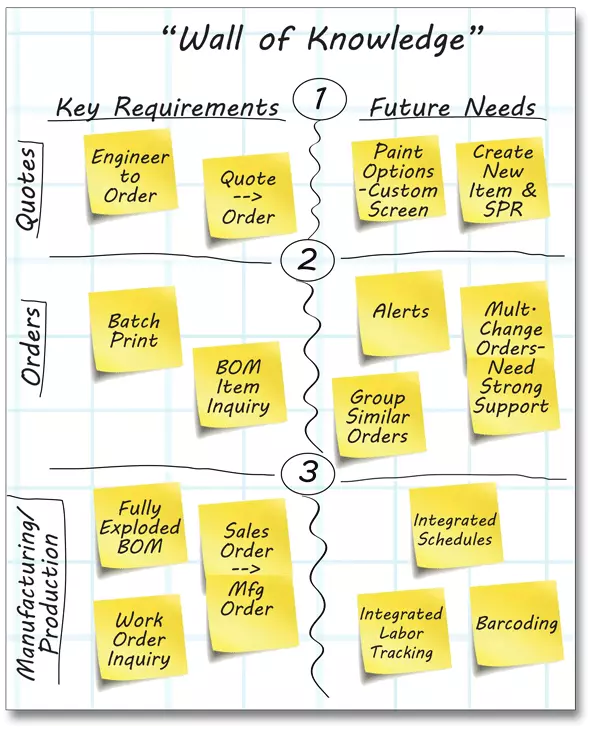
Below, needs and issues from the meeting are analyzed and translated into client-specific system requirements, organized by module or functional area.
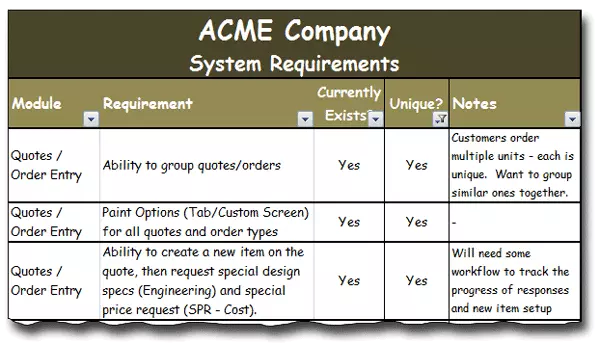
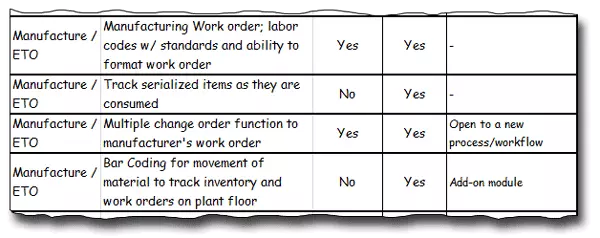
Below, pre-work for the meeting yields a good understanding of the "current state" and desired "future state" of the systems, which we translate into diagrams to discuss at the meeting. These diagrams vividly illustrated for our client the changes they could expect – moving from 16 functions spread among 4 non-integrated systems, to a single ERP system integrating all 16 functions.
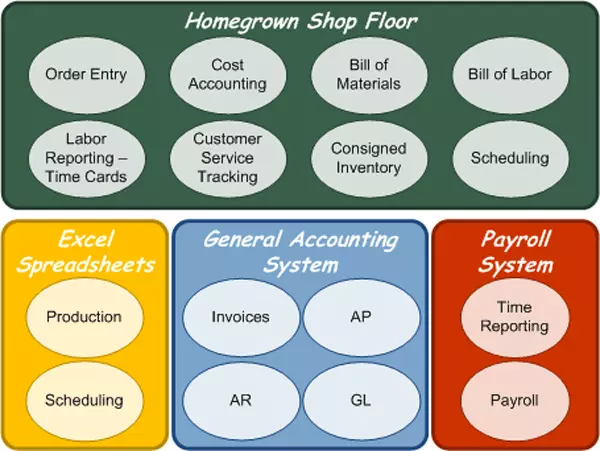

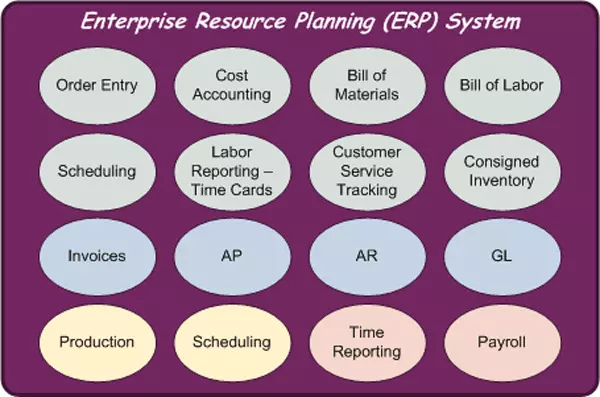
Results & Benefits ...
The final output of this meeting becomes the basis against which candidate systems are screened, the final system is selected, and implementation decisions are managed. In short, the meeting has provided the benchmark and criteria to use in all future phases of the overall ERP project.
Without this clear definition of needs and opportunities, systems cannot be assessed for goodness of fit. With this clear definition, system vendors know exactly what is expected of them and their systems, and how the implementation will be judged as successful – that is, how well it met all of the consensus goals specified in this meeting.
Conclusion ...
The agreed-upon needs, issues, and goals force everyone involved in later meetings, demonstrations, and decisions to evaluate systems not on their features, but on their benefits to the business. We then ensure this laser-sharp focus is sustained by client and vendor personnel during the later ERP phases – implementation, rollout, and transition to maintenance.
For More Information ...
To discuss how this type of project, or technology usage and business process improvements in general, could be applied to the issues facing your business, call us at 336.297.4200 to schedule a no-obligation consultation.





